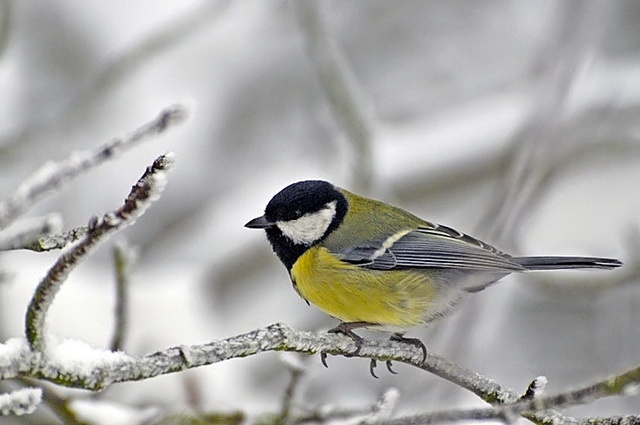A brave great tit probably is either big or hungry
How much risk is a great tit prepared to take? The answer differs greatly among individuals. Maria Moiron and colleagues show that how much the courage the birds exhibit, depends on their size and condition.
Just like humans, animals have a personality, a stable set of coherent behavioural traits. For example, animals differ from each other in how brave they are, the extremes being an aggressive, brutal, curious and enterprising character on the one hand and a shy, cautious and withdrawn nature on the other. As biologists pointed out, these personality types also occur in the great tit (Parus major). Maria Moiron and colleagues wondered if the personality of a great tit is linked to its physical characteristics.
To find out, they weighed a number of males and measured the length of leg, beak and wing. Also, they tested the animals for their willingness to take risks by assessing how aggressive the animals behaved to another male, which intruded into their territory. They also tested how quick they were to explore an unfamiliar test cage.
Fear or courage?
Great tits differ greatly from each other in all triats measured, as it turned out. After a statistical analysis of the data, the researchers conclude that large individuals on average are less anxious than smaller conspecifics. That may be, they speculate, because a large animal has a greater chance of winning when it comes to fighting and will be hurt less severely. An alternative explanation is that it will take more risk in acquiring food because it needs more energy.
Another finding is that the condition of the birds, in the sense of their energetic reserves, also determines their behaviour. An animal in need of some food generally takes more risks than an animal that is well-fed. A hungry bird cannot afford to be careful, it has to take action, the authors explain. It is also possible that a well-fed bird is more cautious because it has more difficulty taking off in case of danger.
Conclusion: the personality of a great tit is indeed related to its physical characteristics. That is not unexpected – but it had not been demonstrated before.
Willy van Strien
Photo: Tbird ulm (Wikimedia Commons, Creative Commons CC BY-SA 3.0)
Source:
Moiron. M., Y.G. Araya-Ajoy, K.J. Mathot, A. Mouchet & N.J. Dingemanse, 2019. Functional relations between body mass and risk-taking behavior in wild great tits. Behavioral Ecology, online January 18. Doi: 10.1093/beheco/ary199
